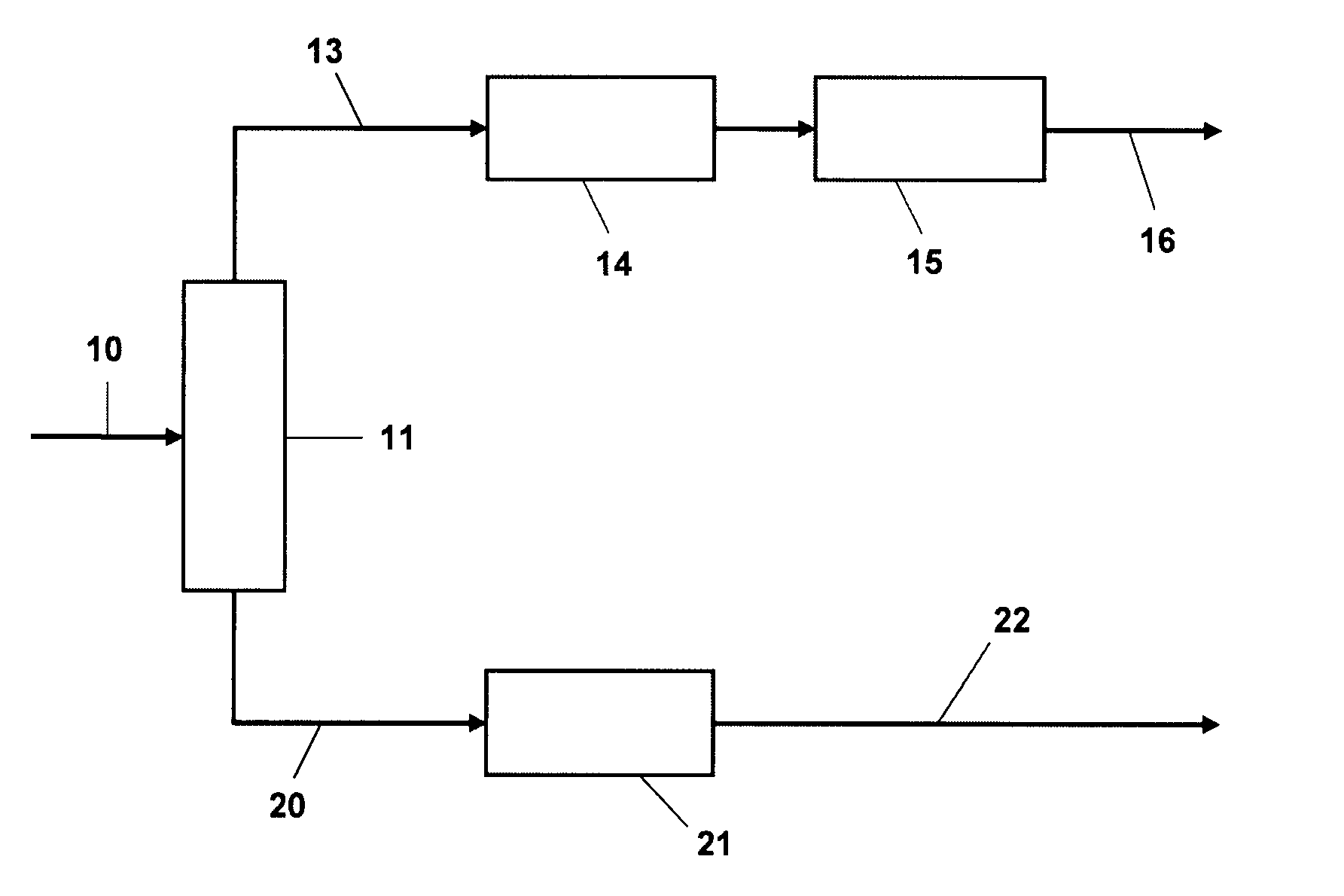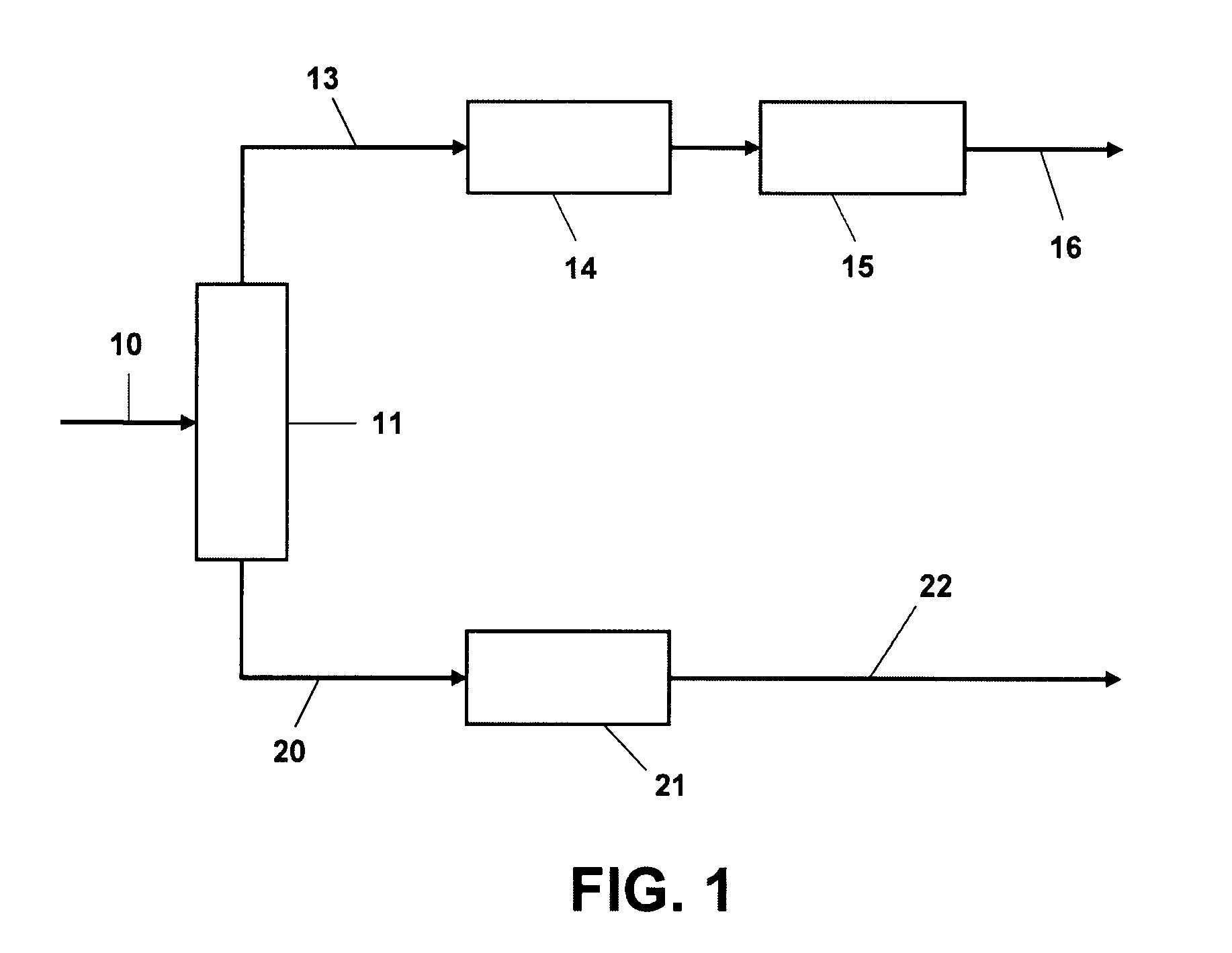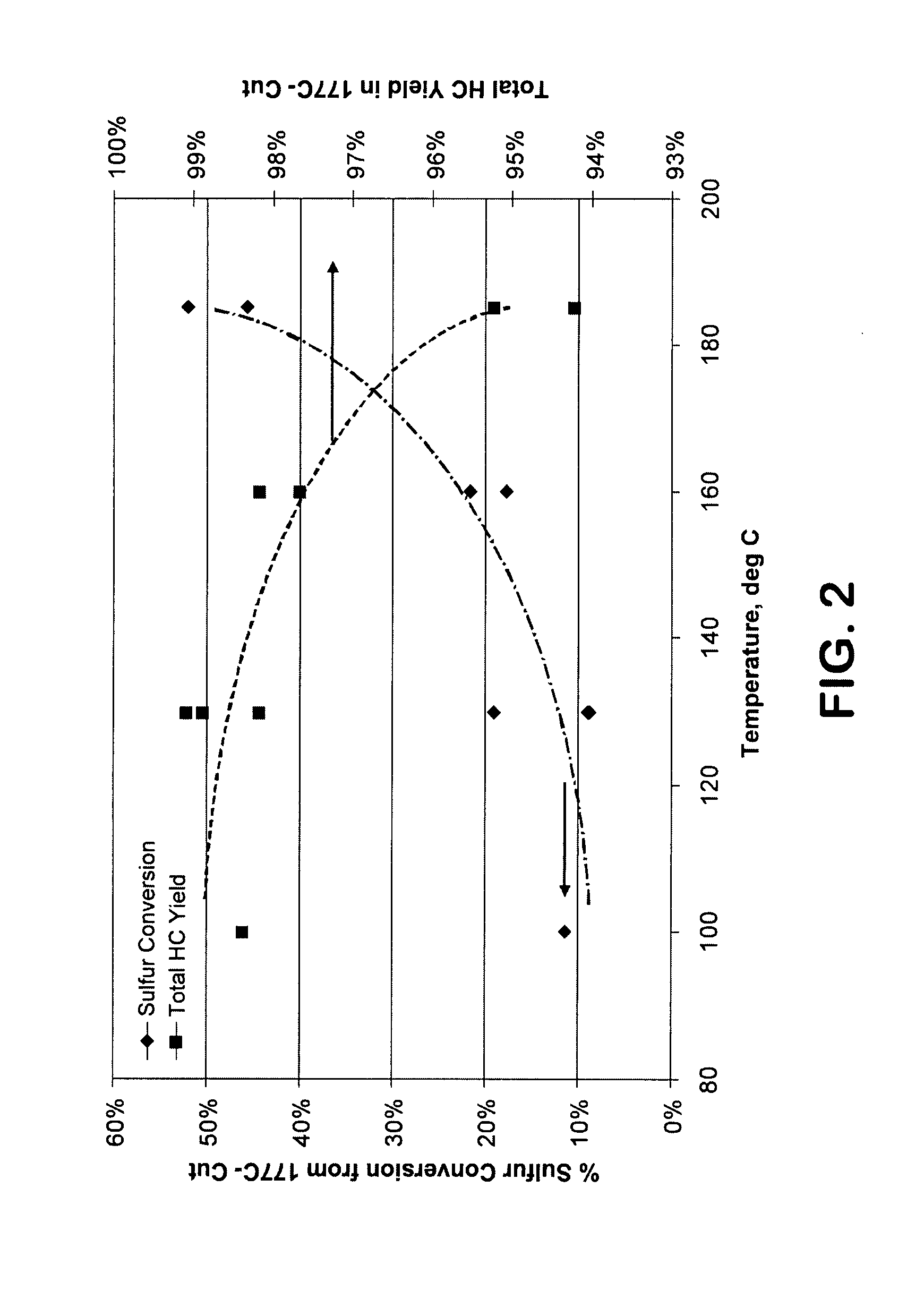Process for benzene reduction and sulfur removal from FCC naphthas
a technology of benzene reduction and sulfur removal, which is applied in the field of hydrocarbon stream upgrading, can solve the problems of relatively poor olefin content and back end, and achieve the effect of reducing the concern for olefin saturation and reducing the saturation of olefins
- Summary
- Abstract
- Description
- Claims
- Application Information
AI Technical Summary
Benefits of technology
Problems solved by technology
Method used
Image
Examples
example
[0049]The effectiveness of the alkylation step for removing sulfur from the gasoline fraction was demonstrated using a narrow cut intermediate (C6-C8) catalytic naphtha fraction containing 49% olefins, 12% aromatics, 360 wppm sulfur. The nitrogen content was reduced to about 1 wppm by treatment with an ion exchange resin (Amberlyst™) and alumina. This fraction was passed without treat gas over an MCM-49 catalyst diluted 4:1 with inerts, in an upflow reactor. The pressure (total system, gauge) was held at 6200 kPag (900 psig) and space velocity at 5 hr−1 v / v; the temperature was varied upwards during the course of the 11 day run during which 2 mass balances were taken each day. A 177° C.− (350° F.−) product fraction was taken and the sulfur conversion from this fraction determined. FIG. 2 shows that the sulfur conversion out of the product fraction increases with temperature and that the total hydrocarbon yield decreases. Similar results were obtained with a 204° C.− (400° F.−) fract...
PUM
| Property | Measurement | Unit |
|---|---|---|
| pressures | aaaaa | aaaaa |
| pressures | aaaaa | aaaaa |
| pressures | aaaaa | aaaaa |
Abstract
Description
Claims
Application Information
 Login to View More
Login to View More - R&D
- Intellectual Property
- Life Sciences
- Materials
- Tech Scout
- Unparalleled Data Quality
- Higher Quality Content
- 60% Fewer Hallucinations
Browse by: Latest US Patents, China's latest patents, Technical Efficacy Thesaurus, Application Domain, Technology Topic, Popular Technical Reports.
© 2025 PatSnap. All rights reserved.Legal|Privacy policy|Modern Slavery Act Transparency Statement|Sitemap|About US| Contact US: help@patsnap.com



